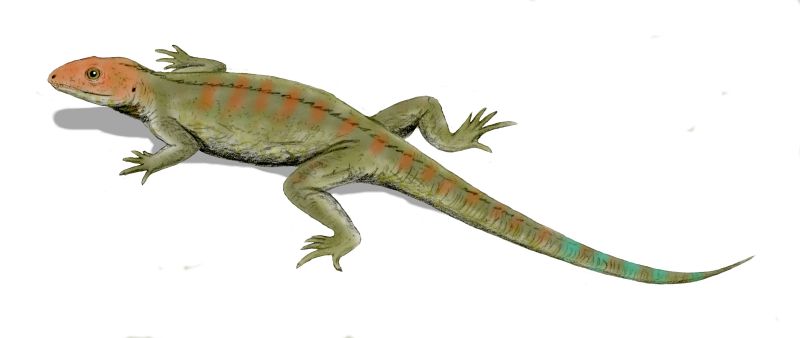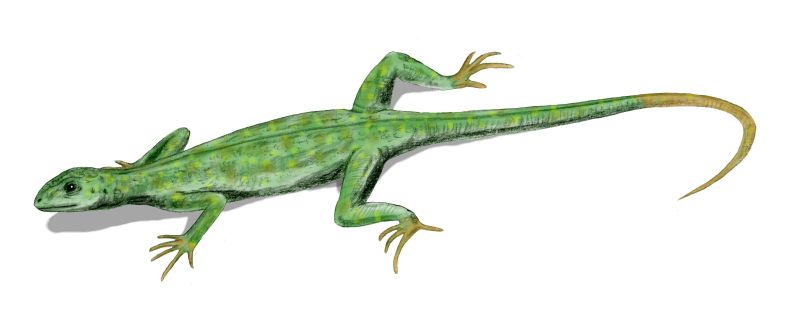石炭紀は、デボン紀の後とペルム紀の前の地質学的期間でした。 約359万年前から約299万年前にかけて続いた。 それは古生代とPhanerozoic eonの第五の期間です。
アメリカでは石炭紀はミシシッピ紀(下部、359-323.2mya)とペンシルベニア紀(上部、323.2–299mya)に分かれている。 ヨーロッパでは、下、中、上という用語が使用されています。,
脊椎動物の進化
初期の四肢動物は、水に卵を産んだ両生類と、陸上に卵を産んだ羊水類の二つの主要なグループに最初に分割されました。 羊膜類は、異なる時代に支配的になった二つのグループを生じさせました。 彼らは最終的に哺乳類を生じさせたsynapsids、および恐竜や他の爬虫類を生じさせた竜脚類でした。 これらの重大な出来事は、石炭紀の下部、ミシシッピ州で起こった。,
石炭
石炭紀は、密な熱帯湿地林によって形成された泥炭の遺跡である石炭対策にちなんで命名されました。 厚い樹皮を持つ新しい種類の維管束植物が森林に生育した。 石炭の多くはこの樹皮から来た。 この生物相は、315-300万年前のペンシルベニアの時代の上部に発生しました。
これらの森林は赤道上にあり、常に低地にある湿地はLaurussiaの超大陸に広がっていました。 これは、今、西の北アメリカであるものを含み、今、ヨーロッパであるものを通って、東の中国までです。, 湿地の中心であった川平野は、カナダ東部からウクライナにかけて5000kmに及び、幅は700kmであった。p6
この種の気候と地理は今日では正確な平行を持っていませんが、インドネシアとマレーシアの泥炭湿地林、アマゾン盆地、ミシシッピ川水系、オケフェノキー沼 沼地はlepidodendronを含む巨大なclubmossesによって支配されました。 彼らは最も初期の木であり、後に針葉樹と開花植物に置き換えられました。, 時には堤防からの他の植物は、スギナ、シダ、木のような翼状植物など、川によって流されてしまった。
湿地林は、ゴンドワナ大陸のラウルシアに対する圧力によって土地のレベルが上がったときに終了しました。 これにより、接触域が上昇した。 石炭対策の終わりは、石炭紀の終わりを示しています。 中国は影響を受けるにはあまりにも遠かった。 そこでは、湿地の森林はさらに50万年続き、ペルム紀に至った。,p30
Images for kids
-

Chart of regional subdivisions of the Carboniferous Period
-

Generalized geographic map of the United States in Middle Pennsylvanian time.,
-
Lower Carboniferous marble in Big Cottonwood Canyon, Wasatch Mountains, Utah
-

Etching depicting some of the most significant plants of the Carboniferous.,
-
Ancient in situ lycopsid, probably Sigillaria, with attached stigmarian roots.
-
Aviculopecten subcardiformis; a bivalve from the Logan Formation (Lower Carboniferous) of Wooster, Ohio (external mold).,
-

Bivalves (Aviculopecten) and brachiopods (Syringothyris) in the Logan Formation (Lower Carboniferous) in Wooster, Ohio.
-
Syringothyris sp.,; a spiriferid brachiopod from the Logan Formation (Lower Carboniferous) of Wooster, Ohio (internal mold).
-
Palaeophycus ichnosp.; a trace fossil from the Logan Formation (Lower Carboniferous) of Wooster, Ohio.,
-

Conulariid from the Lower Carboniferous of Indiana.
-

Tabulate coral (a syringoporid); Boone Limestone (Lower Carboniferous) near Hiwasse, Arkansas.,
-

Akmonistion of the shark order Symmoriida roamed the oceans of the early Carboniferous.,
-

The amphibian-like Pederpes, the most primitive Mississippian tetrapod
-

Hylonomus, the earliest sauropsid reptile, appeared in the Pennsylvanian.,
-

Petrolacosaurus, the first diapsid reptile known, lived during the late Carboniferous.
-

Archaeothyris was a very early synapsid and the oldest known.




